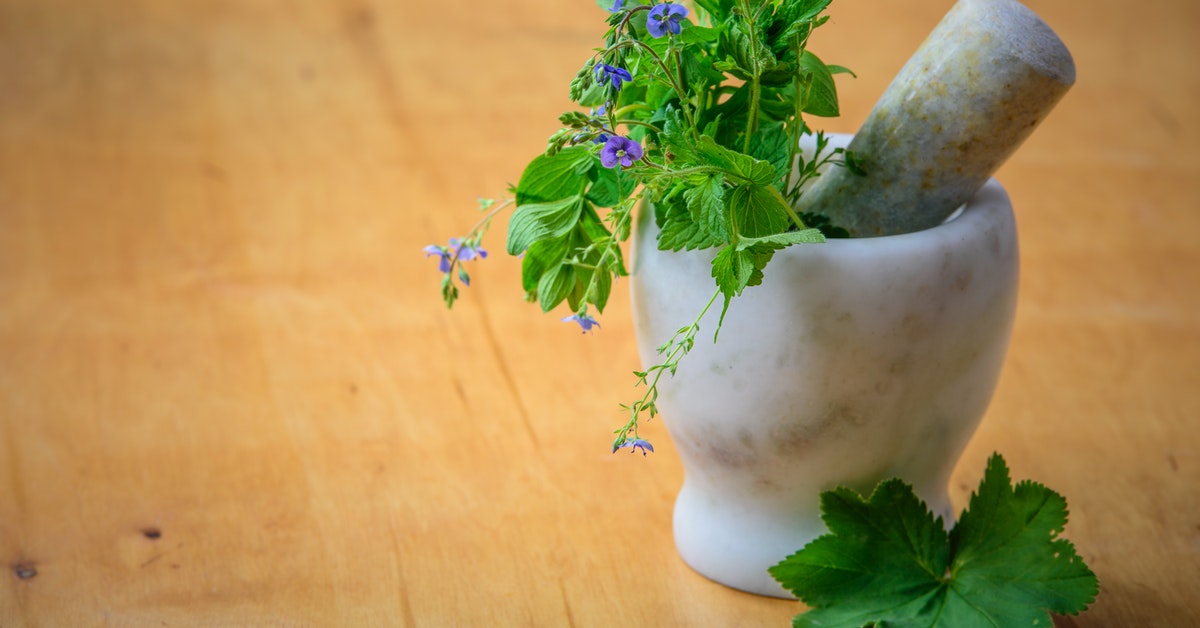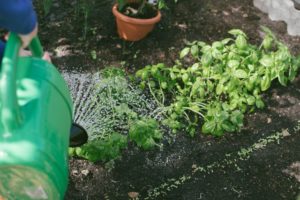Have you ever dreamed of gathering medicine from your own back yard? Early fall is the perfect time to plant perennial herbs for use next year. Planning a medicinal garden is a bit more complex than putting together a flower bed. There are several questions to consider when planning your garden, such as:
- What herbs does my family need?
- What can I grow in my area?
- Am I willing and able to prepare these plants to be used as medicine?
- Am I willing to care for high maintenance plants?
- Here’s how to answer each of these questions and plan the garden of your dreams:
1. Consider Your Family’s Needs
There are dozens of medicinal plants that are easy to grow in most North American climates, but if you have limited space, you should start by considering your family’s health needs. Some herbs like echinacea and motherwort have a variety of uses, but others are more specific. If someone in your family has a breathing condition, like asthma, you might want to consider herbs that specifically treat that condition, such as peppermint, lungwort, or plantain leaf.
Popular medicinal plants include echinacea, thyme, lemon balm, mint, and yarrow. Echinacea has been used for centuries by Native Americans for its medicinal qualities and is still used today as an immune booster. Thyme has antimicrobial properties and can be used in a tea to help reduce cough and cold symptoms. Lemon balm reduces stress and anxiety and is sometimes used as a sleep aid. Mint can be used for various symptoms, including gas, bloating, cold symptoms, and as a relaxant. Yarrow taken internally helps with gastrointestinal distress, and it can be used externally to promote wound healing and even slow bleeding.
When considering plants as medicine, you’ll need to treat them the way you would treat any other drug. Some herbs have contraindications. For instance, if you are allergic to ragweed, you may also be allergic to some herbs, including echinacea. Additionally, certain plants should not be used if you are taking medications. Before you decide what herbs to use with your family, consult a licensed herbalist, and make sure you won’t be doing more harm than good.
2. Research Local Growing Conditions
Once you’ve figured out what plants your family needs and can use safely, you’ll need to narrow down that list by finding out which ones you can grow in your area. The easiest way to determine this is to find out what agricultural zone you live in. You can get this information by calling a local nursery or looking online. Then you’ll want to take other conditions like your soil type and the amount of sun your garden gets into account.
Don’t be disappointed if an herb you had your heart set on won’t grow as a perennial where you live. Many herbs can be grown as annuals during the warmest part of the year. Some of these will even drop seeds that will come up in your garden the following spring. Smaller herbs can be grown in pots in a sunny window. You could even consider purchasing a small greenhouse to grow warmth-loving plants.
Even if a plant is supposed to grow well in your area, you may have trouble with it. Your local soil conditions, pests, and seasonal rain patterns can all help or hinder your success. Gardening is about trial and error; if one plant refuses to thrive after a year or two, dig it up and try something else. Many herbs have the same properties, so you’ll probably be able to find an alternative that will work for the ailment you are trying to treat.
3. Do You Have What it Takes to Make Medicine?
The idea of using homegrown plants as medicine can sometimes be better than reality. Some plants can be harvested and used quickly and easily. You dry the leaves or flowers, make a tea from them, and voila! Medicine. Other herbs are best administered as tinctures, ointments, or oils. These medicines take more time and equipment to prepare.
Before you plant anything, do some research, (again a licensed herbalist can be a great resource) and find out how the plants you want to grow are used. If you’ve never made a tincture or ointment before, you might want to purchase some herbs at a health store or pick some from a friend’s garden and give it a try. This will give you a better idea about whether you want to go through that process every harvest season or not. You will also get to see what the additional ingredients and containers will cost.
4. Consider Maintenance and Space
By now, you should have a list of herbs that you are ready and able to grow, prepare, and use. But hold on: first, you need to take a look at your garden and read up on your chosen plants’ growing habits.
Some herbs can be confined to small areas with very little pruning or maintenance; others get huge and need lots of space or frequent pruning. If you live in the Southeastern US, you can grow a beautiful and medicinally useful vine called passionflower. Like most vines, this one can easily get out of hand if not planted in a proper spot or pruned consistently.
Other plants will stay small but scatter seeds that may grow where they’re not wanted. So the final question to ask yourself is how much maintenance the plants you are considering require and whether you are willing to put in the work? You’ll also need to know if you have enough space to plant everything on your list while giving all your herbs the elbow-room they need. At this point, you might knock a couple more plants off your list, or you might decide you are good to go.
Now that you’ve followed these steps, you are ready for the fun part: planting and using your medicinal herb garden. We hope you enjoy it for years to come.
If you need an herb or supplement, you can’t grow; take a look at our store. We have natural remedies to support a variety of common health concerns, including immunity, thyroid function, and sleep.





